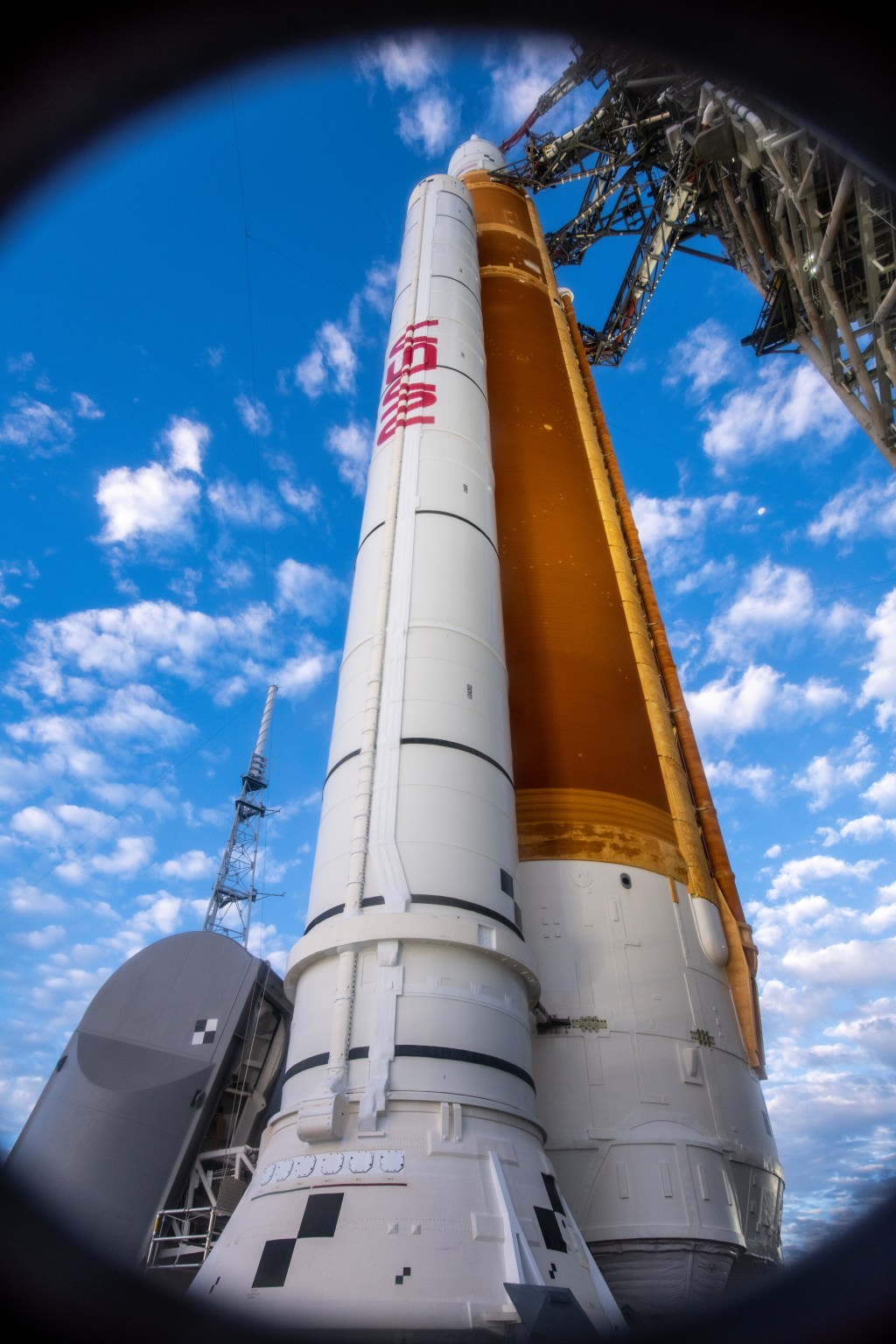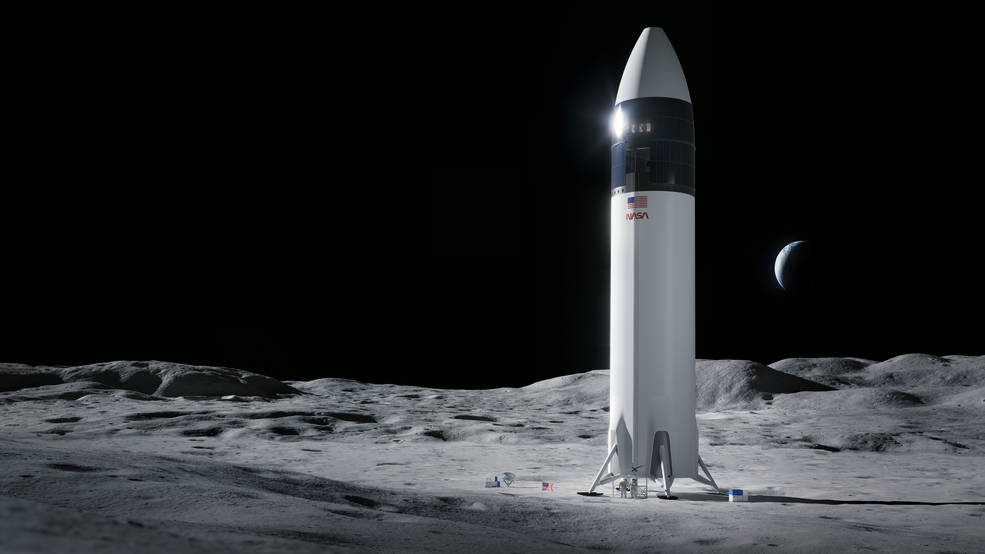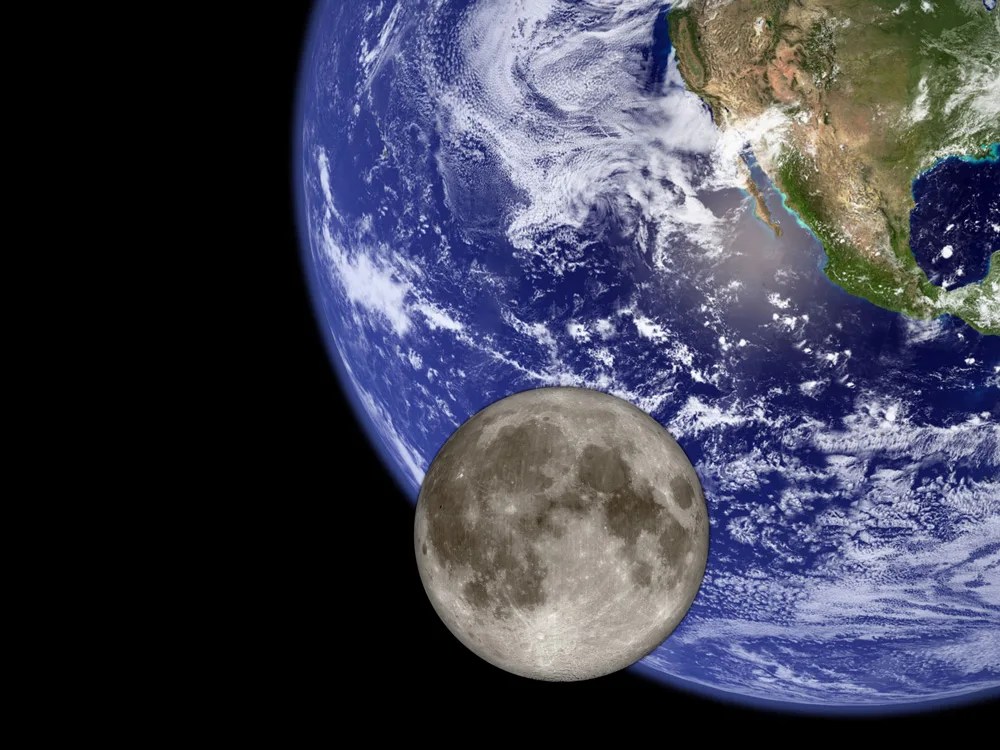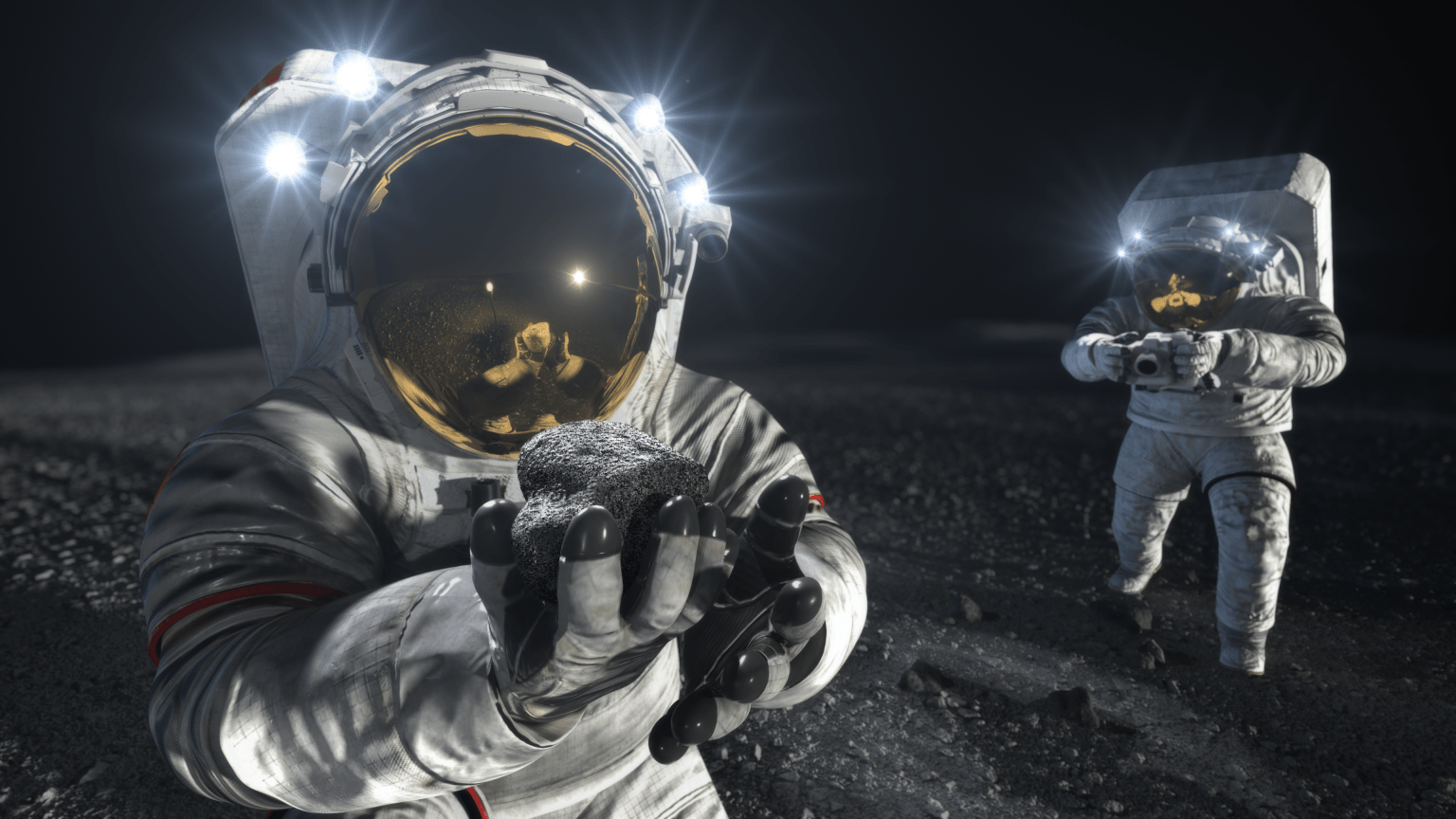NASA, Army National Guard Partner on Flight Training for Moon Landing
By Corinne Beckinger
When Artemis astronauts land on the Moon’s South Pole in a commercial human landing system, they will encounter a landscape pockmarked with deep craters, sloped connecting ridges, and harsh lighting conditions. The Moon’s lack of contrast, combined with its rolling terrain, will also pose a challenge, making it difficult for astronauts to overcome visual illusions on the lunar surface.

In the mountains of northern Colorado, NASA and the U.S. Army National Guard are using military helicopters to develop a foundational lunar landersimulated flight training course to help astronauts practice flight and landing procedures for the Moon.
For decades, military helicopter pilots have trained at the HAATS (High-Altitude Army National Guard Aviation Training Site) in Gypsum, Colorado. In 2021, NASA and the Colorado Army National Guard began working together to develop a course specifically for the next generation of lunar explorers.
That NASA-specific course is scheduled to be finalized in August 2025, marking an important milestone for Artemis crewed landings training efforts.
“NASA is using a three-pronged approach with motion-based simulation, in-flight lunar landing analog training, and in-flight lunar simulation to build out its foundational training for Artemis Moon landings,” said NASA astronaut Doug Wheelock, who helped coordinate the training program. “Helicopters at or above 10,000 feet are not really efficient in the thin air, forcing us into operating with very thin power margins similar to the Apollo astronauts having to manage energy and momentum to land safely. The operations along with the terrain at the HAATS course in Colorado’s Rocky Mountains provide a valuable, real-world opportunity for Artemis astronauts to practice flying and landing in conditions similar to maneuvering a lander in the lunar environment.”
NASA’s human landing systems that will safely transport astronauts to and from the Moon’s surface will be provided by SpaceX and Blue Origin.
NASA’s Artemis III mission will build on earlier test flights and add new capabilities, including SpaceX’s Starship Human Landing System and advanced spacesuits, to send the first astronauts to explore the lunar South Pole and prepare humanity to go to Mars.
While each industry provider is responsible for training Artemis astronauts on its specific lander, NASA is establishing foundational training to help prepare astronauts for crewed flights.
Flight training opportunities like this are vital to mission success and crew safety.”

Doug Wheelock
NASA Astronaut
“Over the last few years, NASA and the Army National Guard have worked closely to evaluate training procedures and landing zone areas, incorporating accounts from Apollo astronauts,” Wheelock said. “During training flights at HAATS, astronauts can experience the visual illusions, cross-cockpit communication, and degraded visibility they may experience navigating to their landing zone near the lunar south pole. Flight training opportunities like this are vital to mission success and crew safety.”
Paired with trained instructors from the Army National Guard, astronauts fly to mountaintops and valleys in a range of aircraft, including LUH-72 Lakotas, CH-47 Chinooks, and UH-60 Black Hawks.
While one astronaut pilots the aircraft, an astronaut in the back charts the landing area, marking key landmarks, identifying potential hazards, and helping to track the flight path. Throughout the week-long course, the landing zones and situations become more challenging, allowing astronauts to experience team dynamics and practice communication skills they will need to land on the Moon.
“Our full-time Colorado Army National Guard pilots have thousands of flight hours navigating the Rocky Mountains at altitudes ranging from 6,500 to 14,200 feet, and we are reaching new heights by providing realistic and relevant training with NASA for Artemis,” said first sergeant Joshua Smith of the HAATS program. “Our Colorado Army National Guard pilots may not fly around the Moon, but we wear our motto, de monitbus ad astra — from the mountains to the stars — with pride.”
Fast Facts
- On the Moon’s South Pole, the Sun is never more than 1.5 degrees above or below the horizon. With the Sun at such a low angle and with only a thin exosphere, shadows are stark, and astronauts may find it difficult to determine distances and heights.
- The Moon’s atmosphere is extremely thin, with few particles, and is called an exosphere.
- The Moon’s exosphere is thin enough to glow in sunlight, which has been observed by spacecraft and some of the Apollo astronauts.
- The Moon’s surface is challenging to land on. There are inactive volcanoes, bounders, large basins, craters, and cracks in the Moon’s crust, caused by the Earth’s gravity tugging on the Moon.
- Moon dust can also obscure the view from the windows of a commercial human landing system, and affect sensors that relay important information, such as altitude and velocity, to astronauts.
Through the Artemis campaign, NASA will send astronauts to explore the Moon for scientific discovery, economic benefits, and to build the foundation for the first crewed missions to Mars – for the benefit of all.
For more information about Artemis visit:








